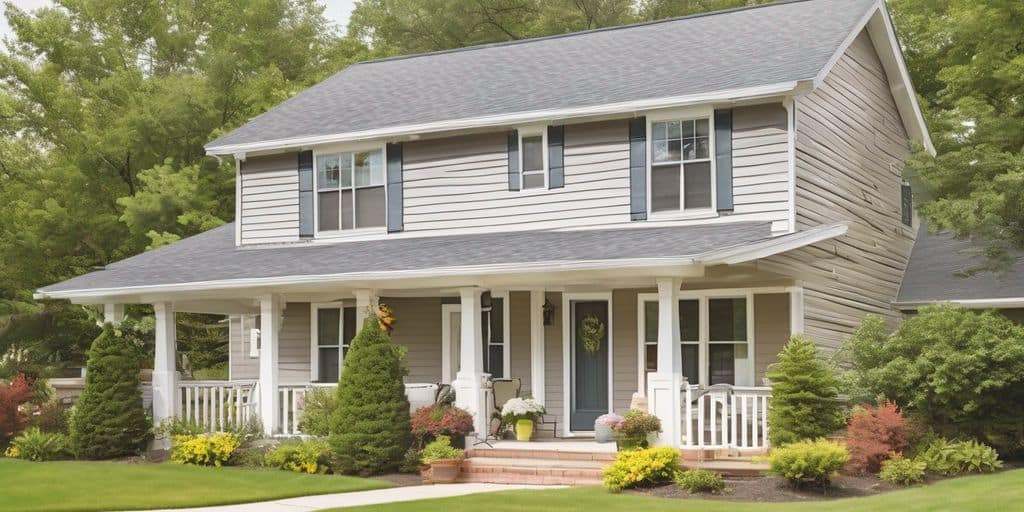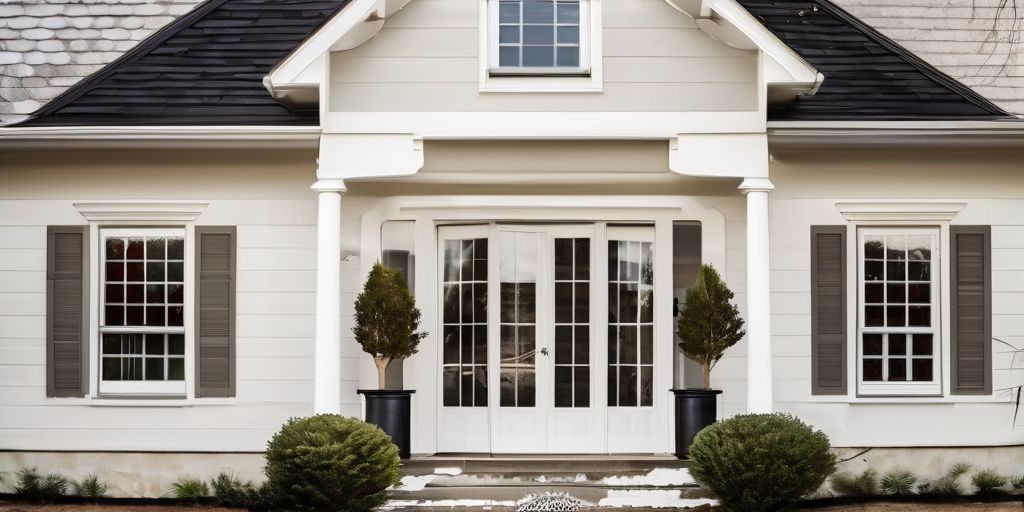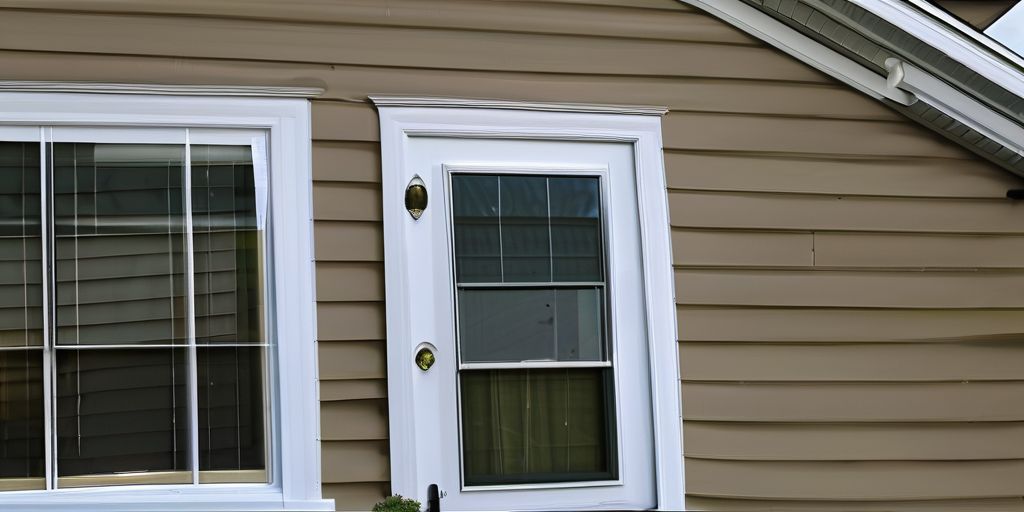Painting vinyl siding can give your home a fresh look without the high cost of replacement. Whether you decide to tackle the project yourself or hire a professional, there are key factors to consider. This article will help you weigh the pros and cons of DIY and professional vinyl siding painting, including costs, paint choices, and safety tips.
Key Takeaways
- Painting vinyl siding is generally more affordable than replacing it, but you need to consider material and labor costs.
- High-quality exterior acrylic latex paint is recommended for the best results on vinyl siding.
- DIY painting requires thorough preparation and cleaning of the siding to ensure a long-lasting finish.
- Hiring a professional can save you time and reduce the risk of mistakes, but it comes at a higher cost.
- Safety is crucial, especially when working on ladders. Proper protective gear and weather considerations are essential.
Evaluating Costs and Budgeting
Painting vinyl siding is generally cheaper than replacing it. To budget properly, consider expenses like high-quality paint, primers, and necessary tools. Assess labor costs, including surface preparation and professional painter fees. Evaluate the square footage of the siding and the potential need for scaffolding, impacting the overall budget. Thoroughly analyzing these factors ensures an accurate estimation for a successful painting project.
Choosing the Right Paint for Vinyl Siding
Types of Paint Suitable for Vinyl
When painting vinyl siding, it’s crucial to select the right type of paint. High-quality exterior acrylic latex paint is often recommended because it provides excellent adhesion and durability. Make sure the paint is labeled as “vinyl safe” to ensure it won’t crack or peel as the siding expands and contracts with temperature changes.
Importance of High-Quality Paint
Using high-quality paint is essential for a long-lasting finish. High-quality paints offer better protection against the elements and are less likely to fade over time. They also provide a smoother application, which can make the job easier and more efficient.
Consulting with Professionals
If you’re unsure about which paint to choose, consulting with a professional can be very helpful. They can offer advice on the best products for your specific needs and even help you understand the guidelines for painting vinyl siding. This can save you time and ensure a more professional-looking result.
Thoroughly clean the siding before painting to ensure the best adhesion and finish.
DIY Vinyl Siding Painting: Steps and Tips
When you’ve crunched the numbers and decided that painting your vinyl siding is the way to go, what’s the next move? Remember, your siding is meant to keep moisture out and let water slide off easily. But if you’re not cautious, your paint might end up behaving like the water. To ensure a successful painting job, use a paint specifically designed for vinyl siding, as it adheres better and provides a smoother finish. Thoroughly clean the surface, repair any damage, and prepare it properly before painting. Always choose the right weather conditions for painting to achieve the best results. Wondering how long your painted vinyl siding will last?
Professional Vinyl Siding Painting: What to Expect
Finding a Reputable Painter
When looking for an exterior painter, it’s important to do your homework. Start by asking friends and family for recommendations. You can also check online reviews and ratings. Make sure the painter has experience with vinyl siding and is properly licensed and insured.
Understanding Professional Processes
Professional painters follow a series of steps to ensure a high-quality finish. These steps often include:
- Thorough cleaning of the siding
- Repairing any damage
- Applying a primer if necessary
- Using vinyl-safe paint
This process helps the paint stick better and gives the surface a smoother finish.
Cost vs. Benefit Analysis
Hiring a professional can be more expensive than doing it yourself, but the benefits often outweigh the costs. Professionals have the right tools and expertise to do the job efficiently and effectively. Plus, a well-done paint job can increase your home’s value and curb appeal.
While DIY painting might seem less risky, professionals ensure everything is perfect—from the weather to the cleanliness of the siding to the type of paint used.
In general, homeowners can expect the labor cost to install vinyl siding to be between $2.15 and $5.25 per square foot, depending on various factors like labor and geographic location.
Safety Tips for Painting Vinyl Siding
Working with Ladders
When painting your vinyl siding, safety should be your top priority. Using ladders can be dangerous, so always have a friend hold the ladder steady. Make sure the ladder is on a flat, stable surface to avoid any accidents. Never overreach; instead, move the ladder as needed to keep your balance.
Protective Gear and Equipment
Wearing the right protective gear is crucial. Always use a respirator mask, gloves, and eye protection to keep yourself safe from harmful fumes and chemicals. Investing in quality tools will not only make the job easier but also safer.
Weather Considerations
Weather plays a big role in painting vinyl siding. Avoid painting on extremely hot, windy, or rainy days. Aim for mild weather with low humidity to ensure the paint adheres properly. Check the weather forecast for the entire week to make sure you have a good window of time to complete the project.
Proper preparation and understanding the services: companies that paint vinyl siding. consult paint stores for color selection, invest in quality tools, master painting techniques, and prepare wisely for a successful project.
Choosing the Right Color for Your Home
Selecting the perfect color for your vinyl siding can be both exciting and challenging. Your choice should reflect your personal style while also complementing your neighborhood. Thoughtful color selection ensures your home looks appealing after painting.
Factors to Consider Before Deciding to Paint or Replace
When deciding whether to paint or replace your vinyl siding, there are several important factors to consider. Each option has its own set of benefits and drawbacks, and understanding these can help you make the best choice for your home.
Longevity and Maintenance
- Painting: While painting your vinyl siding can give it a fresh look, it may not last as long as new siding. Painted siding typically needs to be redone every 5-10 years.
- Replacing: New vinyl siding can last up to 40 years with minimal maintenance. This option might be more cost-effective in the long run.
Cost Comparison
- Painting: The national average cost for painting a home is around $3,700. This can be a more budget-friendly option if your siding is in good condition.
- Replacing: Replacing vinyl siding can be more expensive, often ranging from $5,000 to $14,000 depending on the size of your home and the quality of the siding.
Environmental Impact
- Painting: Painting your existing siding can be more environmentally friendly since it reduces waste. However, you need to consider the environmental impact of the paint itself.
- Replacing: Newer vinyl siding options are often more energy-efficient and can improve your home’s insulation. However, the old siding will need to be disposed of, which can contribute to landfill waste.
Before making a decision, it’s crucial to evaluate the condition of your current siding. In some cases, you might need to replace damaged sections of siding before painting. This step is essential for a smooth, uniform look.
Consulting with a professional can provide expert advice on achieving professional results in vinyl siding painting. They can help you weigh the pros and cons of each option based on your specific situation.
Before you decide whether to paint or replace your siding, there are a few key factors to think about. Painting can be a cost-effective way to refresh your home’s look, while replacing might be necessary for severely damaged siding. To help you make the best choice, visit our website for more information and expert advice.
Conclusion
Deciding between DIY and professional vinyl siding painting comes down to your budget, time, and comfort level with the task. While painting your siding yourself can save money, it requires a lot of preparation and effort. On the other hand, hiring a professional ensures a high-quality finish and saves you from the hassle. Weigh the pros and cons carefully, and choose the option that best fits your needs. No matter which route you take, a fresh coat of paint can make a big difference in your home’s appearance and value.
Frequently Asked Questions
Can you paint vinyl siding?
Yes, you can paint vinyl siding. It’s a cost-effective way to change your home’s look without replacing the siding. Just make sure to use the right type of paint and prepare the surface properly.
What type of paint should I use for vinyl siding?
For vinyl siding, use high-quality exterior acrylic latex paint. This type of paint adheres well and lasts a long time. Primer is usually not needed unless the siding is pitted or porous.
How much does it cost to paint vinyl siding?
The cost can vary. If you do it yourself, you might spend a few hundred dollars on paint and supplies. Hiring a professional can cost between $2,200 and $7,500, depending on the size of your home and other factors.
How long does painted vinyl siding last?
Painted vinyl siding can last up to 10 years if done properly. Using high-quality paint and preparing the surface well can extend its life.
Is it better to paint or replace vinyl siding?
It depends on your situation. Painting is cheaper and can freshen up the look of your home. However, if the siding is damaged or very old, replacing it might be a better option.
What are the risks of painting vinyl siding myself?
DIY painting can be risky because it involves working on ladders and handling chemicals. Mistakes in preparation or application can also lead to poor results. Always consider your safety and skill level before starting.





